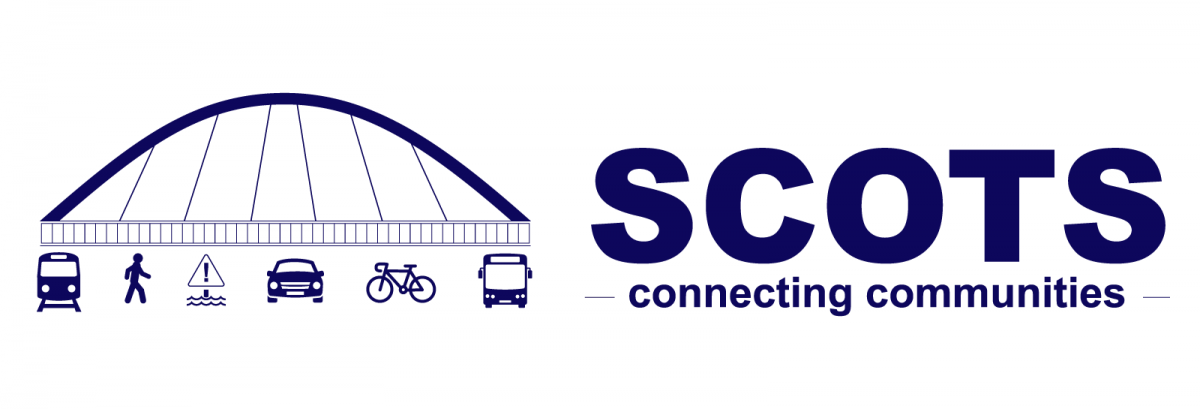SCOTS – Survey Defects additional reporting
December 2024
W.D.M. Limited is building on its successful partnership with the Scottish Collaboration of Transportation Specialists (SCOTS) by introducing new and improved data analysis and reporting to support authorities engaged in its SRMCS contract.
WDM is working with SCOTS in a study led by Aberdeenshire Council and Glasgow City Council to investigate the wider use of data collected by WDM RAVs beyond the requirements of the SRMCS Contract. WDM algorithms allow the derivation of other useful parameters to support the development of maintenance programmes, with defects categorised as: Surface Defects, Surface Distress and Edge Defects.
The new reporting will be provided to all Scottish councils within the WDM mapping module (WIP) at no extra cost.
SRMCS ROAD CONDITION INDICATOR (RCI) COLLECTED TO THE SCANNER SPECIFICATIONS
SCANNER collects over 40 condition categories in families: rutting, ride quality, cracking, texture and geometry. The calculation of RCI uses a parameter from each family with weightings and thresholds for each 10m length of road. The annual SCANNER accreditation assesses the ability of each survey vehicle to collect these parameters in a consistent manner.
RCI provides a powerful and repeatable benchmarking tool to compare Scottish Local Authorities over time, but in order to be used as a tactical tool to identify and prioritise maintenance schemes, it would benefit from being combined with some of the additional measurements already collected by the WDM RAVs.
NEW DATASETS
WDM has agreed to provide all the extra datasets detailed below, within the council’s WDM system UKPMS or PMS at no extra charge and this will be provided in time for the rollout of the 2024 RCI data.
WDM will provide a standard set of map layers within the Web Information Publisher (WIP). However, ad-hoc queries can also be created and presented within the map-based presentation tools built-in to the UKPMS/PMS modules and also can be used as inputs to Scheme Manager for clients who have the full WDM PMS.
SURFACE DEFECTS
Surface Defects use the detailed profiles to detect where “spot defects” such as potholes may exist.
The Surface Defects parameter can be used in conjunction with the referenced video collected from WDM RAVs during the survey
Note that WDM will also collect downward facing videos and these can be provided within the WDM hosted systems.
SURFACE DISTRESS
Two parameters are derived from the variation in texture depths across the full lane measurement width. These are Fretting and Flushing. Fretting involves the development of small cracks and fissures on the road surface, often caused by the combined effects of traffic loads, weather, and ageing. Flushing (or Fatting) occurs when the bituminous binder is near the top of or above the surfacing aggregate and this results in minimal surface texture.
Fretting and Flushing are able to be presented within the WDM Mapping system for each class of road and have been categorised as “Severe”, “Moderate” and “Minor”.
EDGE DEFECTS
WDM has developed a weighting set to make use of the continuous transverse and longitudinal profile data collected by RAV to derive various parameters representing the condition of the road edges. Edge deterioration is more prevalent on rural roads, but the characteristics may be present in urban environments.
These parameters are processed to produce scores for each parameter family, and then these scores are combined to produce an overall score representing the condition of the road edges. These scores are summarised in the WDM mapping tool as below
WDM PAVEMENT MANAGEMENT SYSTEM
The WDM UKPMS is a Tranche 3 accredited module covering all the requirements of the UKPMS specification. Around half of the Scottish Councils also have taken the full WDM Pavement Management System (WDM PMS). WDM PMS contains the UKPMS module but has extra tools like Scheme Manager and Life Cycle Planning (LCP).
Scheme Manager can generate and rank maintenance schemes using any datasets as inputs and also provides a workflow module for managing scheme programmes from inception to completion.
The scheme generation module can use any dataset in the PMS to create schemes of different types. This includes the extra defect parameters described above, so for example, it would be possible to generate different scheme sets for RCI, Surface Defects, Surface Distress, Edge Defects, Visual Surveys, and SCRIM surveys, then promote any schemes into a rolling programme and progress these through the scheme workflow.
Scheme ranking rules are also extremely configurable. Below is one example of ranking where the council have incorporated a scoring system for each scheme type: RCI, Visual surveys, SCRIM, road hierarchy, accidents and defects from their WDM Routine Maintenance System module.
WDM PMS can also provide an on-line/off-line map-based mobile tool for undertaking on-site scheme investigations which can automatically upload information and photos from site and apply a decision matrix to each scheme.
The Life Cycle Planning tool (WDM LCP) is also provided as part of WDM PMS. This tool is a network-based tool allowing year on year calculation of the cost to reach the required Maintenance Policy. LCP allows various “proposed” budgets to be tested and to demonstrate the effect of these budgets on road condition over time. LCP also calculates carbon costs associated with each budget scenario.
LCP can be applied to any network grouping allowing comparison of budget needs over, for example, different areas, divisions, hierarchies, class, individual roads and sections etc.
Share this



